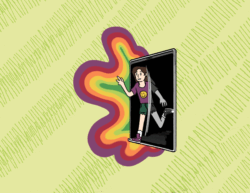With much of Georgetown’s campus currently affected by construction, accessibility for disabled students and faculty has been severely curtailed. Fences crisscross throughways while concrete barricades block off roads and ramps. Although these blockages have been understandingly created for safety reasons, they have unacceptably rendered some buildings on campus functionally inaccessible by disabled students.
Flyers with handicapped symbols crossed out have appeared around campus that read, “This area is difficult to traverse for some of your friends and fellow Hoyas.” Although neither any individuals nor student groups have claimed responsibility for the postings, they have helped catalyze an important and long-overdue conversation about the treatment of disabled students on the Hilltop.
Construction has only magnified the issues confronted by disabled students on a daily basis. On Oct. 11, the entirety of the north end of campus was closed down with only one day’s notice, causing serious accessibility issues. Similarly, according to student disability advocate Lydia Brown (COL ’15), when the elevators in Copley Hall stopped functioning for a night in September, all disabled students in the building had no choice but to relocate during the repairs. They spent the night in New South.
Disability access and the mentality of ableism are issues that merit address at a systemic level, rather than in an ad hoc response to the increased strain placed upon handicapped students by construction and unforeseeable incidents. Dialogue about these problems, however, has been thwarted even in recent days. A Sept. 29 Lunch & Learn session for campus student group leaders sponsored by the Center for Student Engagement and hosted by Brown was virtually unattended.
The Voice spoke recently with Brown, who has proposed the establishment of a disability cultural center at Georgetown to address these concerns. There is little precedent for such an organization—only three universities in the country have centers dedicated to the cultural aspect of disability, as opposed to institutions that assist disabled students with accessibility issues. According to Brown, the impediments to the establishment of a disability cultural center are largely financial. Nevertheless, the university should consider collaborating with advocates like Brown as both a good-faith and necessary investment aimed at addressing an inequality.
Historically, widespread student support has been necessary to push social change at Georgetown. The 2007 founding of the LGBTQ Resource Center, for instance, represented the culmination of a dialogue with the university prompted by the student-organized “Out for Change” initiative. A similar cultural shift, rooted in student advocacy toward spreading awareness of disability issues, is clearly needed on campus.
Empathy and understanding will be the lifeblood of any such advocacy. Ironically, construction may prompt students to internalize—possibly in a temporary and reduced way—the routine struggle of navigating Georgetown’s campus as a disabled student.
A lack of disability awareness may also be attributable to a lack of participation by university bureaucracy. The creation of a disability cultural center would serve as an institutional touchstone and channel to facilitate dialogue between university administration, the Hoya population at large, and their classmates who suffer from disability. If accessibility issues recently raised on campus are to morph into a meaningful wider dialogue surrounding disability at Georgetown, however, it is a dialogue that must both come from and involve all members of the community.




